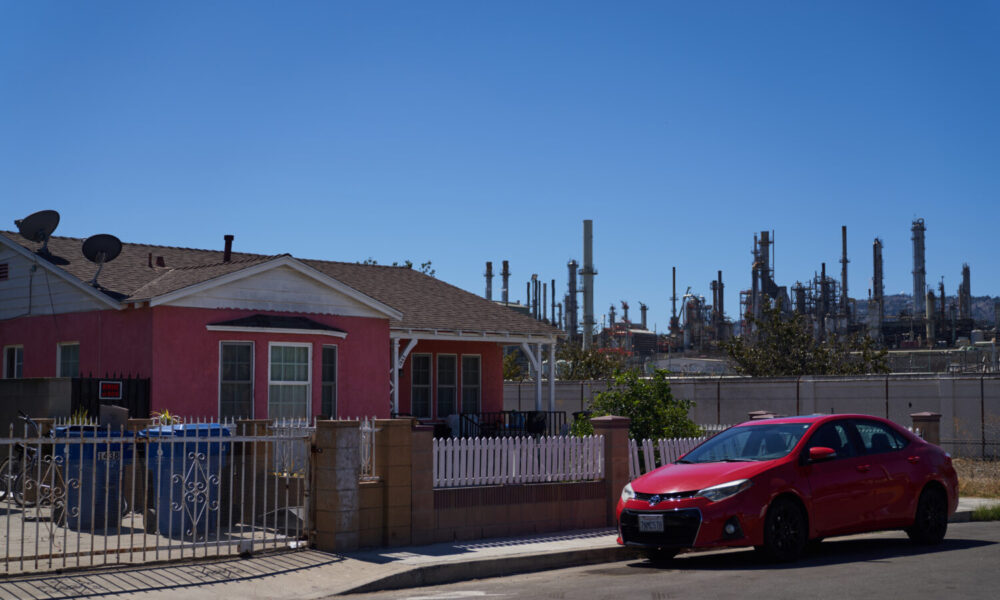Across the U.S., health and environmental policies do too little to protect people and communities from harmful chemicals and pollution. One key reason is that the nation’s environmental laws and rules consider each chemical or facility in isolation, but no one is exposed to one chemical at a time from one source at a time. In the real world, people—especially those living in overburdened communities—are exposed to multiple sources of pollution at once, which interact with each other and research and advocacy by environmental justice (EJ) leaders and experts are driving a new approach to regulating chemical and pollution exposures to reflect the cumulative impacts of this pollution. And grassroots advocates and scientists are working together to put that approach into action.
The Guide
The Union of Concerned Scientists and Coming Clean, together with community and environmental justice organizations, co-developed a Guide to help you learn about and organize around cumulative impacts policies. “Cumulative impacts” refers to a concept of environmental protection that considers multiple health, social, and environmental stressors and burdens rather than one at a time, as today’s fragmented system of environmental protection does. This Guide offers information and resources on cumulative impacts including:
- The Basics
- Mapping and Quantifying
- Recent Laws and Rules
- Community Organizing
- Science and Terms.
We wrote the Guide in English and fully translated it into Spanish. You and your organization might use this map, the Guide, and my recent blogpost on cumulative impacts methods, to talk to your elected officials about policies in your area.
Why is the Guide Needed?
We built this Guide to support connections and learning from existing practices, and none of us can do this work by ourselves. Some states and localities have already enacted cumulative impacts laws and regulations, but communities in other states may be in the midst of working towards policies, or just getting started. Speeding up that learning curve helps communities engage quicker and more fully. Carolina Ortiz from COPAL described her process like this:
“I would feel . . . everybody was an expert but me. . . So, I spent a really long time looking at YouTube videos, . . . books that were simple to understand . . . Wikihows . . .And as I started using some of those tools, I started to understand that even though I did have so many experts in the room, they knew the data, they understood the language, but I was an expert in my lived experience.”
— Carolina Ortiz, COPAL
Providing overburdened communities adequate environmental protections is an urgent need. No one is exposed to chemicals and pollution in the way that they are regulated, and this is magnified in overburdened communities. Beto Lugo Martinez from Rise4EJ describes the many pollution sources in the communities he serves:
The concentration of fossil fuel heavy-duty trucks and locomotives, in our neighborhoods and the indirect mobile emission sources (i.e. warehouses), add to the cumulative exposure and impacts from industrial chemical, power generating pollution facilities. The contribution of co-pollutants and ultrafine particles travel deep into our lungs and bloodstream. The close proximity to hazardous waste facilities classified as Superfund sites contribute to the cumulative impacts. We also have multiple industrial recycling facilities emitting heavy metals. The chemical facilities are sited in a floodplain with no chemical disaster or emergency plan in place. So that is an added risk, while its flooding, the legacy contamination in the soil and groundwater that flows into the neighborhood with no stormwater infrastructure.
— Beto Lugo Martinez, Rise4EJ
And Eboni Cochran from REACT describes cumulative impacts of environmental, social, and health stressors in the following way:
We have soil contamination in at least one of our parks, but I suspect more than that. There was dioxin in the sediment in the fish. We have emotional distress from decisionmakers not taking into consideration the experiences that impacted neighborhoods have. So it’s like we’re beating our heads on the wall trying to tell them things and they’re just doing whatever they want to do and not addressing what we’re talking about. We have odors that are associated with chemical facilities and wastewater treatment plants, which leaves us unable to fully enjoy our homes and also it leaves us worrying about whether the odor is a chemical that is at an unhealthy level. In our neighborhoods, we’re vulnerable to displacement because there’s a high percentage of folks who rent. And so because of high rents and due to other gentrification tactics. . . People are finding it hard to access Black primary care physicians.
— Eboni Cochran, REACT
How Did We Make the Guide?
Our co-development of this Guide was informed by the Jemez Principles for Democratic Organizing. We began with conversations with folks who are most impacted by environmental decisions or those who work closely with them. Co-developers were compensated for their work. We interviewed, listened to, and read the interview transcripts many times. There were multiple review points. Themes surfaced from the interviews, such as impacts on land and people over time, that Loren White from the Indigenous Environmental Network describes here:
In a historical context, a lot of indigenous folks, we’re dealing with the effects of colonization . . . genocide, relocation, dispossession, all would play a huge part in the overall health and well-being of ourselves. . . On top of that, any type of pollutant coming out of an industry near us.
— Loren White, Indigenous Environment Network
And product life cycle impacts aggregated in communities that Jose Bravo from Just Transition Alliance describes here:
Our communities are where fossil fuels . . . are mined, are brought up out of mother Earth. They’re the communities that are also in harm’s way with pipelines and diesel emissions, and at the same time train emissions whichever way that fossil fuel is moving . . . and then we are impacted by those refineries, the chemical plants and those businesses that use those chemicals that are made in that process moving forward. Then a lot of our communities are impacted by . . . dollar stores, where those chemicals come back to our communities in the form of some kind of a widget.
— José Bravo, Just Transition Alliance
What is in the Guide?
The Guide pulls together lived experience, legal and rule-based language, scientific and technical resources, and information about organizing. There are exercises, pull quotes, and tables of information that you can use to build ideas. It reflects the experience and knowledge of many and our goal is that communities can actually use it!
What Should you do Next?
- Share the Guide with your friends and colleagues
- Ask us for a workshop or webinar around the Guide
- Look on this map to see if your state has proposed a cumulative impacts Bill, and use the Organizing section of the Guide to write your elected officials
- Do this scavenger hunt to dig into the Guide:
- Find the ‘Uses of the Guide’ in Section 1. Choose 1 that could apply to you and write it down.
- Find a quote that you find particularly notable. Write down a quick phrase saying why you wrote down this quote.
- Find a linked resource in the Guide. Write down its name and what it is.
- Find the EJ and CI mapping tools. Click on one and navigate to where you live. Write down one notable thing about where you live.
- Find an exercise in the Guide and begin to work on it.
- Find a CI law or rule in Table 5. Write down what permits that law/rule applies to.
- Answer one of the questions in Box 7 for your community.
- Read one paragraph in the Appendix: Science and Terms section. Write a 3-word explanation of what you read and write down one term you learned. Or try to write about the topic using the 10 hundred most common words.

